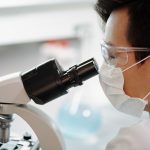The last time Gary Dobson and David Norris had been in the public spotlight was in 1998, when the pair was running through the torture of hate after appearing before a judicial inquiry into the first, failed police investigation.
They and the other three original subjects were hurled with abuse and spat on as they left the hearing; also Norris lashed out at someone as he left.
Then, as now, the men are still denying they were involved in the murder of Stephen Lawrence.
Stephen was an 18 year old A-level student, who was hoping to forge a successful career as an architect.
Stephen was stabbed on his way home with best friend Duwayne Brooks one night in Eltham, South London, in April 1993.
He was stabbed by someone among a group of young, white men. One of them had started to hurl racist insults before they began to charge at Stephen and Duwayne.
The trial hinged on new forensic evidence which was found 15 years after the crime was committed.
The evidence to prosecute the killers had always been there, the hair, fibres and blood of Stephen Lawrence which had been linked to the suspect’s clothes, was only able to be found when new forensic techniques were used when reviewing it in 2007 during the cold case review.
Prosecutor Mark Ellison QC told the jury “Were it not for these new scientific findings, this would still be a case which didn’t have any reliable evidence to support prosecuting anyone for any crime.”
The main forensic evidence against Gary Dobson was on his bomber jacket which he claimed “He had not worn in years.”
A tiny blood soaked stain in the collar of Dobson’s jacket was a billion-to-one-match with Stephen’s blood, said the prosecutor.
Flakes of similar blood were found in the evidence bag where the jacket was kept.
Stephen’s clothing – a polo shirt, trousers, cardigan and a coat provided the majority of evidence against the two men.
Nineteen tiny fibres matching Stephen’s clothing was found on Dobson’s jacket and also inside the evidence bag and cardigan of his.
There were seven fibres on a jumper which was taken from Norris’s house and also there were two hairs which matched Stephen, found in a bag in which his jeans were kept after they had been seized.
While in the witness box Norris said the clothes which were being used as evidence against him were not his, but one of his brothers, and had been taken out of the bedroom he had recently moved into.
Both defence lawyers argued that the brown paper bags in which all the clothes for evidence had been kept and using sticky tape to seal them was a very basic way of storing evidence.
They said that the evidence bags had been stored together, that the seals had started to come unstuck and that the clothing had been investigated close together. This leading to innocent transfer of blood flakes, fibres and hair.
Forensic scientist Alan Tribe said “Although it was a brief and swift attack, there was still sufficient time from there until significant contact between Stephen and his attackers, from the evidence we have put before you we are satisfied that the blood either cast off in the air, or passed in contact, and the textile fibres from Stephen’s clothing could have deposited on the suspects during that time and would be evidence of close contact when Stephen was breathing.”
At the time of the attack Dobson was 17. In his statement he said that he was home studying and went out with friends an hour after the attack had happened. His parents backed up his alibi.
Norris 16 said he was at home, several miles away from the attack in Chislehurst. His mother backed his alibi, however was later accused by the prosecutor of inventing her evidence.
Eighteen months after the murder police hid security cameras in Dobson’s flat. It recorded all five suspects meeting there and acting out violent knife attacks while using offensive and racial language.
This may have not been evidence of their guilt, but it did show their violent and offensive nature and was part of the case against them, said the prosecutor.
If this true-crime story is of interest to you, why not find out more about the subject of Forensic Science and take a look at our course here today.








